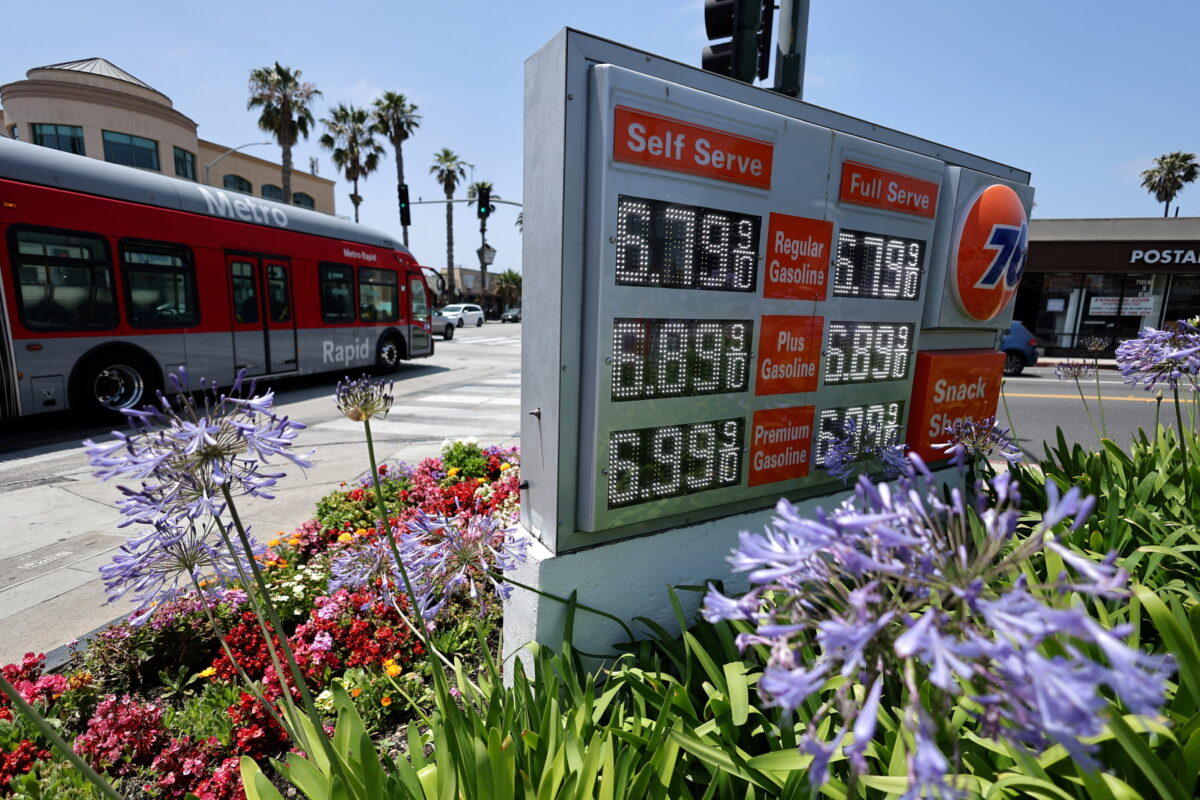[ad_1]
White House Chief of Staff Ron Klain took a victory lap on behalf of President Joe Biden for what Klain described as a “historic decline” in gasoline prices to around $4 per gallon, crediting the president’s get-tough attitude toward U.S. oil producers for the multi-week fall of pump prices.
Klain made the remarks in an interview on CNN on Aug. 8, in which the White House official said that prices dropped after Biden demanded oil refiners bring them down in line with falling crude prices.
“I remember at the start of the summer, the president said, as the price of oil goes down, the price of gas needs to go down. He put it right to the oil companies,” Klain said.
“Every single day this summer, the price of gas is down. It’s down well over a dollar. We’re going to see today, the average price of gas fall to $3.99. The most common price of gas in America now is $3.79. So, by taking on these special interests, taking on these powerful interests, we’re making progress on inflation,” he added.
“The president’s having victories over those special interests. That’s going to bring prices down,” Klain said, adding, “we’ve brought it down every single day this summer in [a] historic decline.”
Biden has criticized large oil corporations, accusing them of price gouging American consumers.
The heads of ExxonMobil and Chevron have pushed back on Biden’s claims and argued that the administration has maintained a relatively hostile environment for fossil fuel companies to do business.
High prices at the pump—and soaring inflation more broadly—have been problematic for the Biden administration, which has sought to capitalize on marginal drops in gasoline prices.
Biden or Market Forces?
While Klain credited the Biden administration’s efforts for the price drop, experts say there are market factors behind the decline, including 40-plus-year high inflation making Americans drive less and pushing down demand.
Americans are driving less than they did in the summer of 2020, when pandemic restrictions put a damper on travel.
“AAA finds that drivers made significant changes to cope with high pump prices,” the American Automobile Association (AAA) said in a statement, citing a survey that found almost two-thirds of U.S. adults have changed their driving habits to offset high prices.
This trend dovetails with a sharp drop in U.S. gasoline demand compared to pre-pandemic seasonal norms, with demand even lower than in the comparable period in 2020, when lockdowns restricted movement.
The four-week average of US gasoline consumption, a common gauge for demand, was around 1 million barrels a day below pre-pandemic seasonal norms at the end of July and around 64,000 barrels per day lower than in the comparable period in 2020, according to the Energy Information Administration (EIA).
For the week ending July 29, 2022, the most recent available data, the four-week average was 8.6 million barrels per day, down from 9.4 million a year ago and 9.6 million in the comparable week in 2019, EIA data show.
In July 2020, when pandemic travel curbs were widespread, the four-week average was just over 8.6 million barrels per day.
Prices of crude oil in international markets have also been in a downward trend in recent weeks.
“Oil is the primary ingredient in gasoline, so less expensive oil is helpful in taming pump prices,” Andrew Gross, AAA spokesperson, said in a statement. “Couple that with fewer drivers fueling up, and you have a recipe for gas prices to keep easing. It’s possible that the national average will fall below $4 this week.”
GasBuddy analyst Patrick De Haan said in an Aug. 8 statement that oil prices are now at their lowest level since the war in Ukraine disrupted energy markets and sent prices higher.
“Oil prices now stand at their lowest level since Russia invaded Ukraine, and could continue to see pressure from a slowing global economy, which is likely to erode demand for oil,” De Haan said.
The analyst noted that the average national gasoline price has dropped for the eighth week straight to $4.01 per gallon as of Aug. 8, though he added that this is still 83.6 cents higher than a year ago.
While he sees further downward pressure on gas prices, he cautioned that weather events like hurricanes are a key risk that could reverse the price trend.
“The groundwork is laid for a ninth week of decline, with areas of the West Coast soon ditching the $5 per gallon average. While I’m upbeat the drop can continue for another couple weeks, we’re starting to see some activity in the tropics, which may increase risk of potential disruption,” he said.
Analysts at Goldman Sachs said in a recent report that they expect supply constraints to persist and demand to remain relatively high, predicting that gasoline prices will rise to around $4.35 per gallon by the end of 2022 and to $4.40 in 2023.
[ad_2]
Image and article originally from www.theepochtimes.com. Read the original article here.


